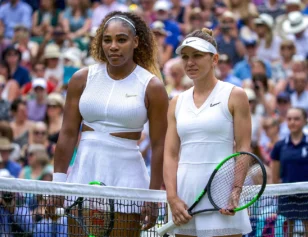Today's sports universe is dominated and dictated by hyperbole, two-minute hype and over analysis. The average player is considered unworthy of his status. Every good player is great. Every great player is the next immortal. The real story gets lost in groupie, talking heads tossing words around to be dramatic and engaging.
The path to being considered a great player has been cut in half by the overwhelming effect of the social media machine, the proliferation of sports cable outlets and 24-hour radio and TV impressing uninterrupted images and opinion upon the people—all day long.
When a player has a breakthrough season, he’s on top of the world and in most opinions, on his way to elite status. In football for instance, Cam Newton, RG3 and Andrew Luck were all touted the next “immortal QBs” by one news outlet or another. Any new NBA stud is considered the next something. All of the praise being heaped on guys who haven’t even played professionally for half a decade, leads to swift rises (RG3) and mighty falls (Jeremy Linn).
Reality and standards can be lost in all of the white noise and talking-head static that is emitted daily. Fortunately, for all of the athletes that are considered “great” in their respective sports, Serena Williams capturing her 18th Grand Slam title and tying the incomparable Martina Navratilova and beloved Chris Evert reminds us that there are — in the words of Meek Mill — "levels to this sh@$t.
The true legends of the game don’t leave much for debate or dismissal. Their accolades are stacked higher than The Sears Tower and the toughest battles they often endure are the ones within themselves. Getting it up every day and bringing the pain, hardcore to the brain in every game, contest or match. The only standards they chase are those set by royal ghosts of the game’s past.
The Williams Sisters from Compton, California, have been a brand name in women's professional tennis for over 15 years and the standard by which competitive excellence is measured in the sport. Together, Venus Ebony Starr Williams and Serena have saved, marketed, molded, maintained the credibility and increased the visibility of U.S. Women’s tennis—basically for dolo. Older sister Venus hit the scene and captivated the tennis world and beyond, laying the foundation for the unprecedented impact that Serena would later enjoy as the best female tennis player ever.
Venus has seven Grand Slam singles titles, which ties her seventh on the all-time list, and is more than any other active female player except for her younger sister Serena. Her 22 overall Grand Slam titles consist of seven in singles, thirteen in women's doubles, and two in mixed doubles. Toss in four gold medals and you get the idea.
Serena had an advantage over Venus, who was the test dummy in the “Williams Sisters Experiment” which came to redefine tennis and then influence fashion, celebrity, female empowerment, and the ideas of beauty, dating and the total athletic landscape.
Serena's made strength and dominance, sweat and athletic passion an appealing charm for women. Her muscles and banging booty and sculptured frame evokes the aura of a Greek or African Goddess ruling a kingdom of tennis from childhood into woman hood (she turns 33 on Sept, 26).
Richard Williams says the way he knew way back when his daughters were young that Serena would not only eclipse her older sister Venus but be one of the best to ever do it was because he figured,"Serena would have Venus to show her the way."
Serena also had that younger sibling drive to prove she was better. Venus was content with being older and feeding Serena’s destiny-driven, obsession to be the best. Even if Steffi Graf (22) or Margaret Court (24) has more Slam titles, Evert herself called Serena The G.O.A.T. and Navratilova says Serena’s 120 mph serve is second to none.
Serena seemed to be getting better with age. In 2013, she set career highs in match wins (78) and titles (11) while notching her 16th and 17th majors at the French Open and U.S. Open. But she's had a disappointing 2014, which included a bizarre viral infection, and after falling out of the Australian Open, then the French Open, then Wimbledon shockingly early, Williams says she was feeling the pressure of chasing the two women whose rivalry defined tennis and helped it explode into the mainstream in the 80s.
Serena is more powerful than Graf, more athletic than Evert, and she has been able to sustain the No. 1 ranking and individual excellence at the majors at a later age than Navratilova, although Navratilova played singles to age 38 and held the top ranking over 100 weeks more than Williams has so far.
Graf's candidacy for best ever is also colored by the fact that her reign coincided with a time on the tour when Monica Seles, her most dangerous rival, was stabbed by a fan and left.
Serena, in contrast, has had to outlast or overcome challenges from myriad flanks: Her sister Venus, Martina Hingis, Justine Henin, Kim Clijsters, Lindsay Davenport and Jennifer Capriati — all of whom won multiple Grand Slam titles — and now, today's generation of rising stars.
"I feel she can keep going," Evert says. "There's no reason why she can't reach Steffi. … She can win three or four more for sure, in my mind, if she stays healthy, stays engaged in the sport and stays motivated. And I think she has a real sense of history now, which has changed. I think at the beginning of her career she didn't."
ESPN analyst Pam Shriver, a former US Open singles finalist herself who won 21 Grand Slam doubles titles with Navratilova believes that when taking the entire body of work into account — singles, doubles, mixed doubles, Olympic medals, "I'd put Serena and Martina in front of Steffi," Shriver said. "Steffi won her first title in '87 and won her last in 1999. Serena won her first in '99 [at age 17 at the U.S. Open]. So far for Serena, that's a 15-year gap between your first and your last. Which also measures greatness: that ability to do it over time.
We wonder how long Serena can keep this up. Venus has slowed down and the rigors of decades of playing tennis with a boulder on her shoulder, the weight of an entire race on her back and the pressure of having to battle her sister and sacrifice for the family, has taken its toll.
Venus is still undoubtedly considered a Top 10 all-time player, but Serena is the Mary J Blige of Tennis. You can’t count her out and when she drops she’s always classic.



